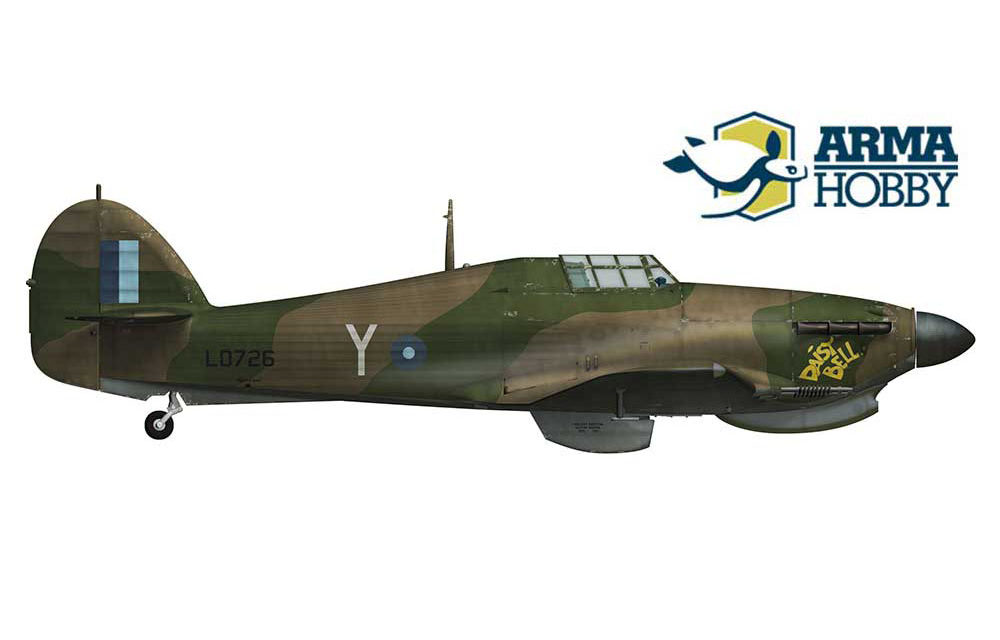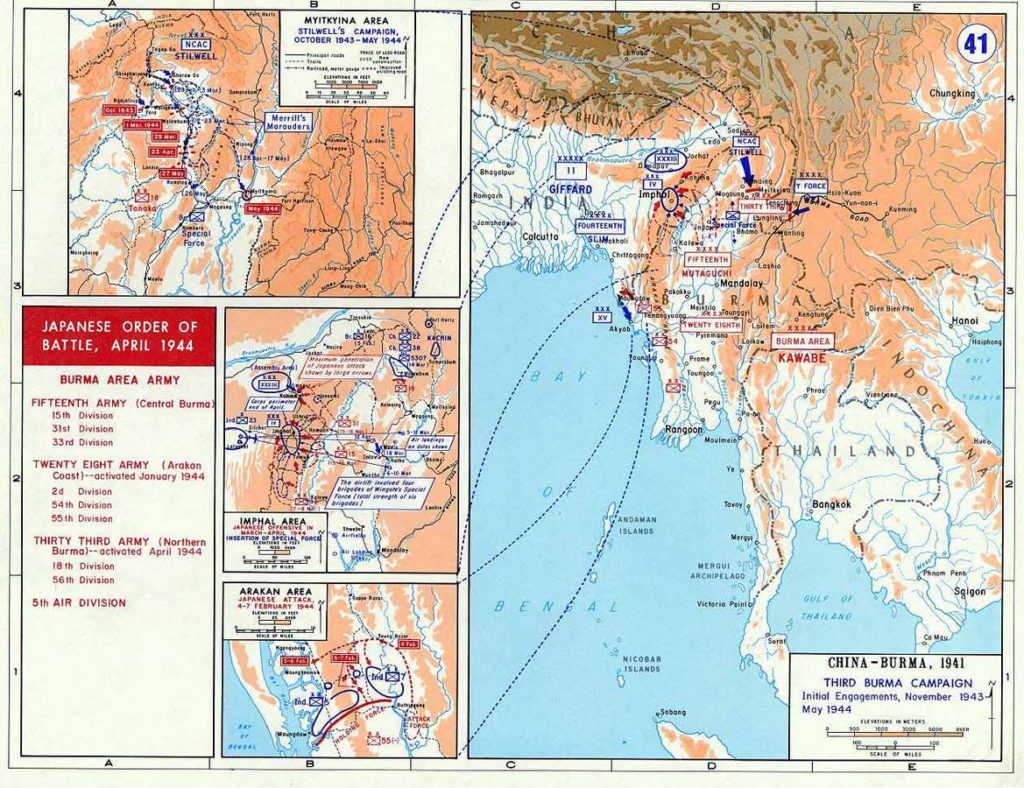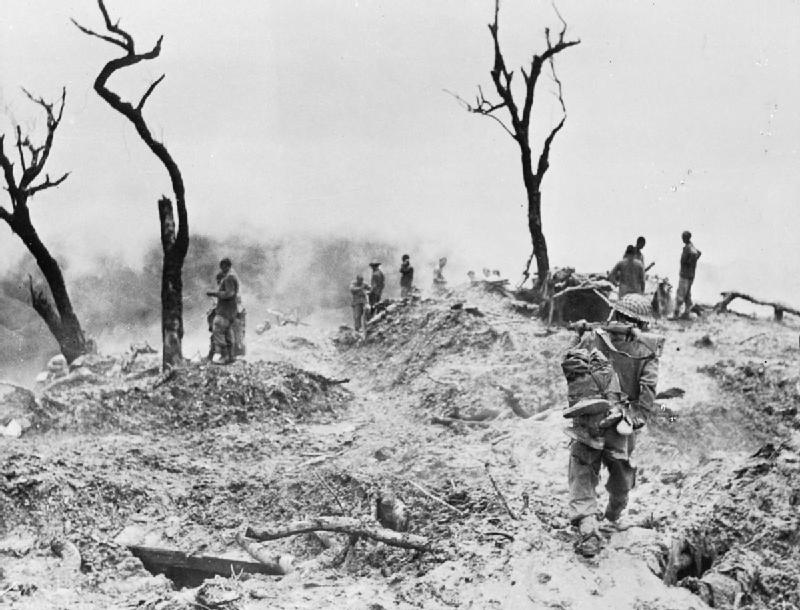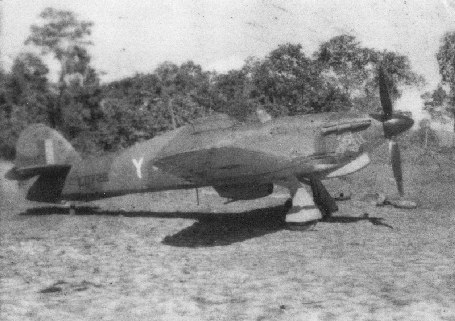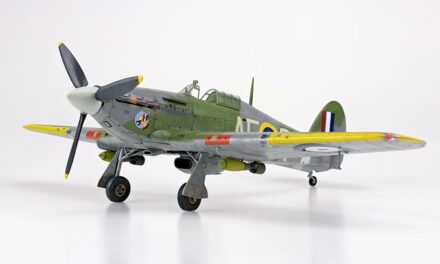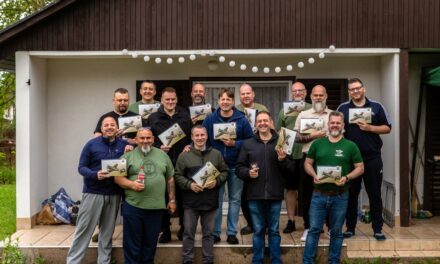Formed in 1917 in Egypt, No 113 Squadron RAF saw action during the campaign against the Turks in Palestine. Its main duty was supporting land forces. Soon after the Great War, the unit was disbanded.
Before Hurricanes arrived
Seventeen years later, in May 1937, it was re-formed. Originally it was assigned to Bomber Command No 1 Group but in August 1937 it was transferred to No 5 Group. There it served until April 1938 when new orders sent the squadron to Egypt where it finally received long waited Bristol Blenheim bombers.
On the 3rd of September 1939 the United Kingdom declared war on Germany but until June 1940 the Mediterranean area was quiet. It gave squadron’s crews time to prepare for combat.
On the 10th June Italy declared the war on France and Great Britain. Since that day No 113 squadron took active part in campaigns against Italians and Germans in Libya, Greece and Egypt. On the 30th December 1941 squadron received orders transferring them to Far East, to Burma where British forces were pushed back by Japanese army
Soon after arrival to a new place pilots started attacks on Japanese land forces in Burma, Malaya and Siam. Eventually it withdrew to India. Basing there, the pilots continued attacking Japanese forces. In spring 1942 No 113 was sent to China as a part of RAF China Wing, although it was rather political step as British involvement was limited.
After unit’s return from China pilots continued their missions attacking enemy ground units but it was obvious for pilots and crews that Blenheims were obsolete. Fortunately the Headquartes knew that too.
Arrival of Hurricanes
On the 14th August 1943 No 113 flew their last mission on Blenheims and the next day unit withdrew to rearm. The process started on the 1st September with arrival of a new the OC, S/L Aitkens. Some pilots, gunners and navigators left to other units that continued flying bombers. There were also some new pilots who arrived to replace those who left.
After those personnel changes pilots started training – some of them had to refresh flying single engine planes. After that they started flying in formation, air-to-air combat and ground attack.
Four months later squadron became operational again and on the 20th December moped to Manipur Road base in north-east Assam. In January pilots commenced combat missions to support Allied ground forces. Lack of Japanese aerial activity allowed pilots to gain combat experience and improve tactics which soon turned out very useful.
Map of Burma 1943-44 campaign. US Army via Wikimedia Commons – public domain.
Kohima, Imphal and liberation of Burma
The first part 1944 turned out to be the turning point of the Burma campaign. In March 1944 Japanese army commenced their last offensive which aim was to destroy Brithish forces and occupy India.
On the 6th March the ‘U Go’ Operation begun with Japanese attack in the Iphal area. The initial attack almost cut off 17 Indian Division but thanks to Aliied aerial supremacy allowed to supply Indian forces and bring reinforcements. Heavy fights lasted until July 1944 when Japanese forces begun withdrawal due to heavy casualties caused by Allied soldiers, hunger and diseases.
The other part of Japanese offensive was the Battle of Kohima which commenced in April. Japanese 17th division attempted to cut off supply lines for British forces in Imphal but their plan was baffled by 1500 British soldiers who managed to keep their positions until relieving troops arrived. End of April saw growing Allied supremacy and Japanese forces were eventually forced to withdraw.
This offensive cost Japanese army 60,000 soldiers killed, wounded, missing and sick. British forces lost 20,000.
Battle of Impahl, soldiers of the 4/10 Gurkha Rifles on Scraggy Hill. Photo:e Official photographer of No.9 Army Film and Photographic Unit, Wikimedia Commons – public domain.
At the beginning of Japanese offensive No 113 squadron moved to Tulihal airfield which became their base for attacks against enemy forces. Pilots took off every day for combat missions but soon Japanese air force started attacking their base. On the 14th March Japanese planes attacked and damaged one of the Hurricanes. On the 17th another one was damaged when Ki-43 fighters of 204th Sentai strafed the base.
On the 22nd squadron lost three Hurricanes. They were coming back from the mission around Layshi area when they met very harsh weather conditions. Lack of fuel made them land on the airstrip they thought to be Tulihal, yet it was Tamu, recently captured by Japanese land forces. After landing F/Sgt H. Clement, who flew Hurricane ‘R’, stayed with Hurricanes while F/O A.L. Herbert, flying Hurricane ‘T’, and F/O J.A. Illman, Hurricane ‘S’, went to find some ground crew. Instead they found Japanese soldiers who killed them. Sergeant Clement managed to escape to the jungle and return to Allied lines. Next day four Hurricanes of No 34 Squadron strafed Tamu airfield and destroyed Hurricanes of 113 squadron.
Hurricane Mk IIc Trop, LD728/Y from 113 SquadronRAF, pilot: F/O Graham Skellam, Burma 1945. Aeroplane painted with standard SEAC Hurricanes camouflage: Dark Green and Dark Earth uppersurfaces and Sea Grey Medium lower surfaces. “Daisy Bell” personal insignia painted on engine cowling. It is unclear if it was painted opposite side (no photografic reference available). SEAC low-visibility roundels but no white recognitioin stripes on wings and taiplanes. Artwork by Zbyszek Malicki.
Soon Tulihal became too dangerous place to stay and the squadron moved, first to Silchar and then to Patharkandi. Since then Tulihal was only used as a forward base. The ground crew who left there had two duties – during the day they were re-arming and refuelling Hurricanes and in the evenings they took their rifles and machine guns and became ground forces defending the airbase. The other reason of withdrawing was that bases in the Imphal area were crowded – there were 11 squadrons of Hurricanes, 5 of Spitfires, 3 squadrons of Vultee Vengeance dive bombers and a lot of C-47 Dakotas used for transport of soldiers and supplies.
On the 25th May squadron moved to new base in Palel where they stayed for next seven months. However, the base was not very safe as it was within range of Japanese artillery.
At the end of June, Japanese forces overwhelmed by British land and air supremacy, starved and full of sick soldiers begun withdrawal with 14th Army units on their heels.
When the 14th Army started offensive 113 squadron supported troops, flying around 500 missions a month with the peak in October when they flew 800 missions. They attacked bunkers, transports, bridges, boats. On the 20th November unit lost two Hurricanes shot down by enemy anti-aircraft artillery. W/O H. Ball was killed and F/O C.J. Ellis managed to leave his plane safely. On the 19th December squadron moved to airfield near Yazagyo located closer to frontline. From this base squadron flew missions to support the 14th Army crossing the Irrawady river. On the 2nd January lost one Hurricane when squadron was attacking enemy lines in Gangaw area. W/O J. Southworth was killed.
“Daisy Bell” insignia close up. Photo from Tony O’Toole collection.
Bye Bye Hurricanes
One of the last missions where Hurricanes were used was battle of Mandalay, yet year of heavy combat took its toll on Hurricanes which had to be replaced by new aircraft. On the 5th April 1945 squadron flew their last mission and were moved to Wangjing in the Imphal Valley where it started changing Hurricanes to Thunderbolts. When pilots finished training 113 squadron took part in the last big battle in the Burma campaign – the battle of Sittang. Later they were preparing to take part in the attack on Malaya but atomic bombs dropped on Hiroshima and Nagasaki made Japan to sign unconditional surrender.
F/O Graham Skellam
One of the chosen schemes offerd in new Arma Hobby Hurricane Mk.IIC Trop. box is aircraft flown by F/O Graham Skellam. Unfortunately it is quite difficult to find information when he joined Royal Air Force but his Log Book reads that in August 1942 he was in No 22 Elementary Flying Training School in Cambridge, Great Britain. Next he was transferred to Saouth Africa where he continued his training – first in No 6 Elementary Flying Training School in Potsehorn and then in No 27 Senior Flying Training School in Bloemfontein. In December 1943 he arrived in Egypt where he continued his training in No 74 Operational Training Unit in Petah Giva. He finished it on 11th January 1944. Between 25th January and the 3rd March 1944 he continued training in No 71 OTU in Ismaila.
Then he was sent to India where he started next training on 5th July 1944 in No 3 Refresher Flying Unit in Poona and then in Low Attack Instruction School in Ranchi Bihar . He finished the courses on 24th August and was assigned to No 113 squadron. When he arrived in the unit the heaviest fights around Imphal and Kohima were long finished. At the time of his arrival squadron was basing in Palel.
He flew for the first time on the 2nd September but it was not a combat mission only reconaiisance around Imphal Valley. His first combat mission took place on the 24th August. His task was to strafe and bomb Japanese positions in Fort White.
His Log Book shows that his main task was supporting ground forces with bombs and cannons.
F/O Skellama Hurricane, “Daisy Bell”. Photo: www.113squadron.com, you will find there more information, docuemtns scans about pilot and squadron.
He usually flew planes with individual letter ‘Y’.
The first one was Hawker Hurricane Mk.IIc trop LF287. He flew it for the first time on the 14th September and the last mission was on the 18th January.
His next plane was Hawker Hurricane LD726 with individual name “Daisy Bell”. He flew it for the first time on the 20th January and the last on the 27th January. During that mission the radio of his plane took fire.
Last plane was Hawker Hurricane LB873. He flew first mission on the 30th January and the last one on the 3rd April.
In April 1945 with Rest of squadron He transfer red to P-47 Thunderbolts. He flew it for the firs time on the 8th April. Flying Thunderbolts he continued to bomb and strafe Japanese ground units.
During the war he flew 155 combat missions and spent 245h and 55 minutes in the air.
You may be interested in:
- History of the 113 Squadron RAF, www.113squadron.com
- Hurricane Models in Arma Hobby, including Mk IIc trop (70037) with markings of F/O Skellam’s “Daisy Bell”
An enthusiast of air war during the Battle of Britain, over North Africa and Italy, over South East Asia and France in 1940. In free time builds models in 1/72 scale, and from time to time in 1/48 scale.
This post is also available in:
 polski
polski


